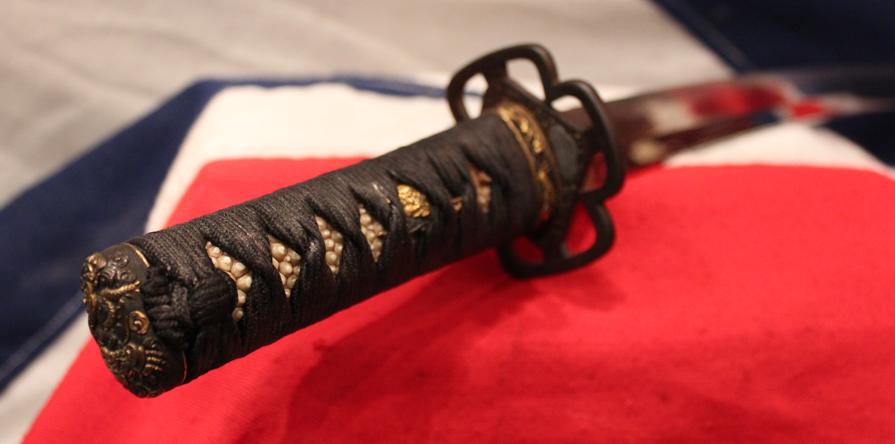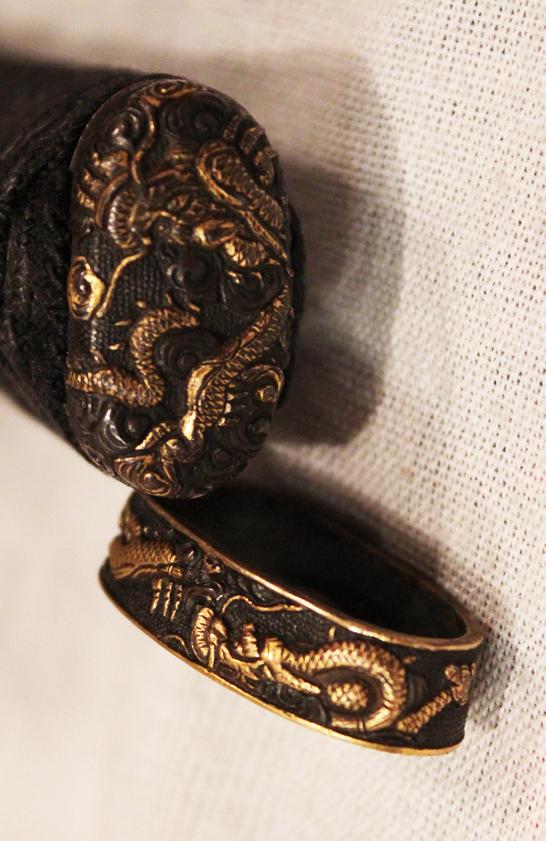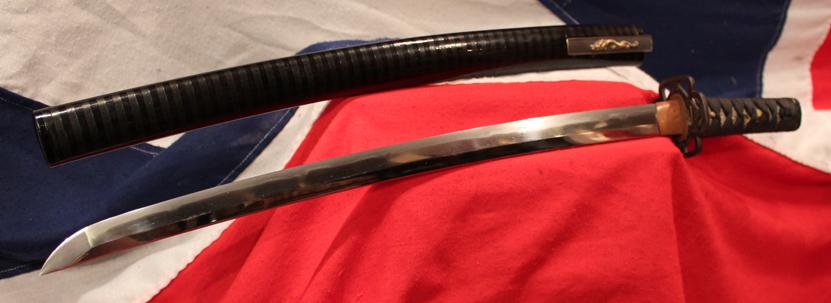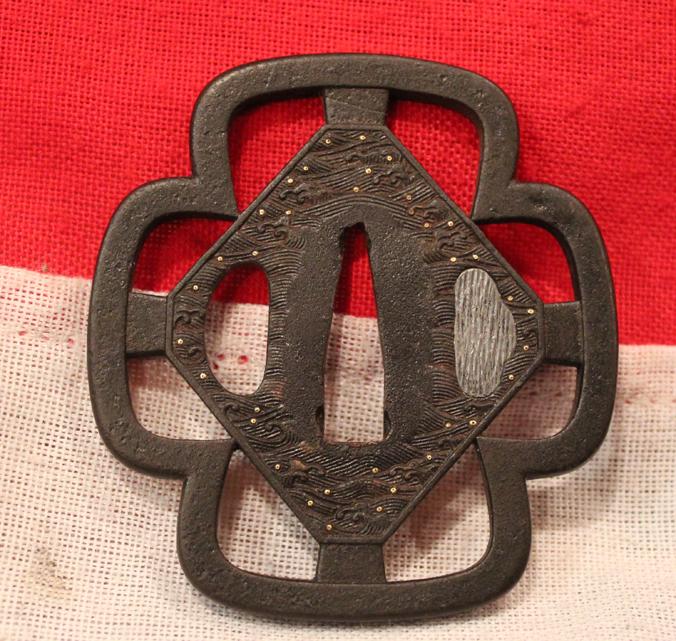A Very Fine Indeed Samurai Shinto Wakizashi with Original Edo Goto School Dragon Fittings of Shakudo and Gold & An Edo Tettsu Krishitan {Christian} Tsuba
With Goto school pure gold and shakudo fushi kashira decorated with dragons, on a hand punched nanako ground. A most interesting and beautiful quality o-sukashi Krishitan tsuba of a squared-off mokko form cross, decorated with flowing river water and inlaid gold dots representing stars. The Stars and The River as Christian Symbols, are images or symbolic representation with sacred significance. The meanings, origins and ancient traditions surrounding Christian symbols date back to early times when the majority of ordinary people were not able to read or write and printing was unknown. Many were 'borrowed' or drawn from early pre-Christian traditions. It may be that the design of the tsuba confronted the believer to the ambiguity born of a prolonged time of painful secrecy. Surrounded by the threat of violence, even a weapon could bear a hidden symbol of Christianity—the cross.
The Hidden Christians quieted their public expressions and practices of faith in the hope of survival from the great purge. They also suffered unspeakably if captured and failed to renounce their Christian belief.
It also has its optional kodzuka, the hilt decorated with a dragon, and the blade that is signed and with a hamon. Superb original Edo period lacquered saya with a stripe and counter stripe pattern design. Three hole nakago and superb polished Edo blade of a gently undulating notare hamon displaying super grain in the hada. Wakizashi have been in use as far back as the 15th or 16th century. The wakizashi was used as a backup or auxiliary sword; it was also used for close quarters fighting, and also to behead a defeated opponent and sometimes to commit ritual suicide. The wakizashi was one of several short swords available for use by samurai including the yoroi toshi, the chisa-katana and the tanto. The term wakizashi did not originally specify swords of any official blade length and was an abbreviation of "wakizashi no katana" ("sword thrust at one's side"); the term was applied to companion swords of all sizes. It was not until the Edo period in 1638 when the rulers of Japan tried to regulate the types of swords and the social groups which were allowed to wear them that the lengths of katana and wakizashi were officially set.
Kanzan Sato, in his book titled "The Japanese Sword", notes that the wakizashi may have become more popular than the tanto due to the wakizashi being more suited for indoor fighting. He mentions the custom of leaving the katana at the door of a castle or palace when entering while continuing to wear the wakizashi inside. Wakizashi were worn on the left side, secured to the obi waist sash. Although they appear to be likely a relative expensive luxury compared to other antique swords from other nations, they are in fact incredible value for money, for example a newly made bespoke samurai style sword blade from Japan will cost, today, in excess of £11,000, take up to two years to complete, will come with no fittings at all, and will be modern naturally with no historical context or connection to the ancient samurai past in any way at all. Our fabulous original swords can be many, many, hundreds of years old, stunningly mounted as fabulous quality works of art, and may have been owned and used by up to 30 samurai in their working lifetime. Plus, due to their status in Japanese society, look almost as good today as the did possibly up to 400 years ago, or even more. Every katana, tachi, or wakazashi buyer will receive A complimentary sword stand, plus a silk bag, white handling gloves and a white cleaning cloth. .
Code: 23913
5500.00 GBP










